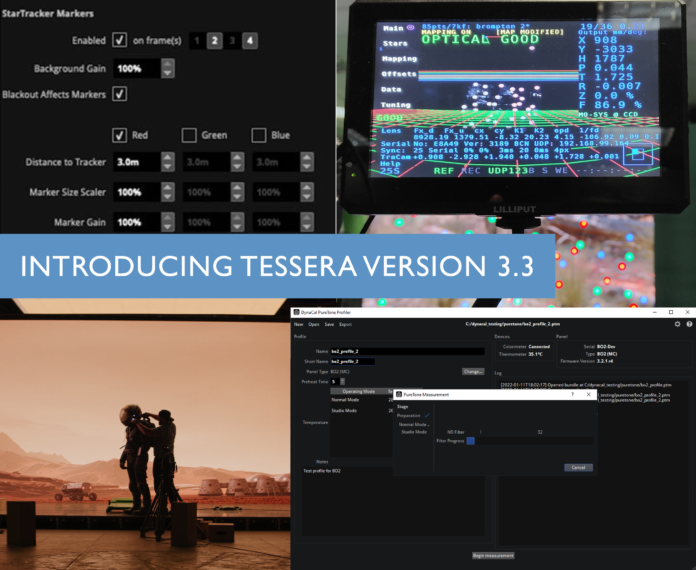LED video processing products manufacturer Brompton Technology has moved forward with the beta release of its Tessera v3.3 software features, a move designed to optimize the performance of LED panels to further streamline professional workflows.
New features include Operating Modes, and Per-Batch PureTone.
Additionally, the Tessera SX40 and S8 now have a preset to support the ACES AP1 color space, as used by ACEScg.
Lastly, in collaboration with Mo-Sys, Brompton has added support for the company’s StarTracker camera tracking system when using panels fitted with the Tessera R2 or Brompton’s new Tessera R2+ and an SX40 or S8 processor with Frame Remapping.
The new Tessera R2+ receiver card has the same SO-DIMM form-factor as the R2. R2+ is backwards-compatible with all existing R2-based panel designs, but brings additional data pins and capability to support new LED drivers.
Operating Modes enables a single panel type to have multiple Operating Modes, each with a slightly different configuration for the panel. Different Operating Modes can therefore prioritize different aspects of visual performance, such as maximum frame rate, low brightness performance, bit depth or effective refresh rate, among others.
Additional Operating Modes can be created by Brompton engineers working closely with the panel manufacturers. Once activated, users can switch panels between Operating Modes via the processor, depending on the requirement of each event or project.
In the new Tessera v3.3 software PureTone has been extended to allow each individual batch of panels to be measured separately to generate a PureTone profile specific to that batch. To create a profile, a PureTone profiling kit is required, which incorporates a sensitive colorimeter. A single LED panel is measured within a dark room to generate the profile, which can then be used with all the panels in that particular batch.
Meanwhile, the Tessera SX40 and S8 now have a preset to support the ACES AP1 primaries, used by the ACEScg color space that is increasingly the choice of CG artists. This avoids the need for a color space conversion in the source device.
ACES AP1 will be automatically recognized by the processor when received over HDMI 2.0, or alternatively, may be manually selected on the processor. The user can also reference the ACES AP1 color gamut within Brompton’s dynamic calibration tools.





